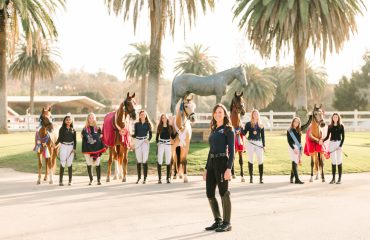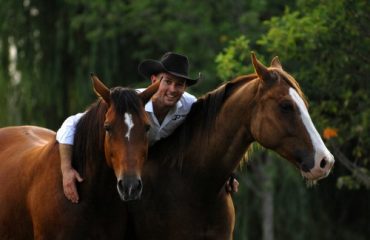By Margie Sugarman
My child loves riding. I know it’s important when she falls off to get back on, but what’s the best way to handle it? She is young and gets scared to get right back on. I want to do the right thing and handle it the right way to ensure she continues to love the sport.
We’ve all been in a situation that calls for fast action. Our brains are wired in a way that leads it to keep us safe. When we perceive something as potentially harmful, our built-in warning system goes off. The fear trigger is hard-wired into our brain, and our experiences, along with what is in our mental ‘tool kit,’ determines how we handle the challenge, and, consequently, the ultimate outcome.
Foremost, we must remember that fear is a normal and natural response. Anxiety walks together with fear. Learning skills that prevent the fear from overtaking us and impacting our responses is an integral piece of enhancing our responses. But being young and inexperienced doesn’t always afford one the opportunity to intellectualize or pull positive things from the experiences we’ve had.
Let’s all think back to when we were much younger. Almost everyone reading this article can relate to having ridden a bicycle. Do you remember the tears shed when you first fell off your bike? Do you remember the ripped pants and bloody knees as your legs hit the ground and your new bike scraped against the pavement? Do you remember the frustration in wanting to get back on, and the fear that accompanied your desire to ride off with the other kids? But you did get back on and you tried again!
Why? Children bounce back for a variety of reasons. Foremost, they are kids and used to falling. They don’t have the understanding that they can get really hurt. Their perceptions are centered around their more immediate experiences. While adults realize they’re not invincible, young children and teens believe that they really are! Moreover, coercing a child just to get back on and sit on a pony/horse after a fall doesn’t allow time for the anxiety and fear to settle in. Remind the child of a fall that they recently had and how they got up, brushed themselves off and went back to enjoying the experience despite the fall. Remind them of how their younger siblings fall when learning to walk but get right back up and try again.
Our brains can’t tell the difference between an imagined event, a real event or a memory. Help your child create a mind movie—a mental video or a story where they’re feeling excited about riding and having a positive experience. Have them describe it in as much detail as possible. Ask them to replay this video in their mind and ask if they saw anything new in the replay. In doing this exercise, the child is imprinting positive outcomes in their subconscious mind—and we know that it’s the subconscious mind that feeds the conscious mind. This approach to dealing with fear is much more than positive thinking. This is the same type of ‘rehearsal’ professional and Olympic athletes utilize to get ready for their competitions.
As your child is imagining their mind movie, make sure they’re taking some deep breaths. Anxiety causes our brain wave to shoot up. We want the brain wave low to help maintain calmness. The lower the brain wave, the more relaxed our minds and bodies are and the more confident we feel. Bingo!
Horses are living creatures and can get scared, just like people. An important tool for children learning how to ride is the emergency dismount, which is rarely taught these days.
Teaching children how to dismount when things seem to be getting out of hand, for either rider or horse, is a security measure that stays with someone for their entire riding career. If you have a youngster starting out, ask their trainer to spend some time teaching them this technique. The security it gives the rider is something that no other strategy offers.
Would you park your car on a hill without using the emergency brake? The more skills we have, the more secure we are.
Photo:
Savannah Kelman practices trotting. Teaching children how to emergency dismount is an important part of their early riding career.
Photo by Ali Kelman













